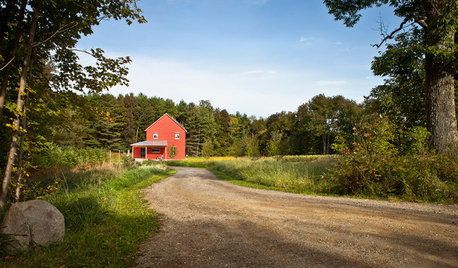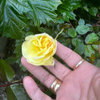Re-emergence of Rose Mosaic Disease in Florida Nurseries and Land
henry_kuska
9 years ago
Related Stories

GARDENING GUIDESA Mom, a Garden and a Gift for the Neighbors
Gardening can be therapeutic in unexpected ways. See how one gardener found peace and purpose in a patch of Florida soil
Full Story
THE ART OF ARCHITECTUREFinding the Perfect Home for a New House
Sun, soil, water, topography and more offer important cues to siting your house on the land
Full Story
GARDENING GUIDES10 Tips to Start a Garden — Can-Do Ideas for Beginners
Green up your landscape even if you're short on time, money and knowledge, with these manageable steps for first-time gardeners
Full Story
GARDENING GUIDES10 Top Native Plants for the U.S. Southeast
For a low-maintenance and wildlife-friendly landscape, use Southern natives that withstand heat and humidity
Full Story
GARDENING GUIDESNew Ways to Think About All That Mulch in the Garden
Before you go making a mountain out of a mulch hill, learn the facts about what your plants and soil really want
Full Story
FALL GARDENING7 Reasons Not to Clean Up Your Fall Garden
Before you pluck and rake, consider wildlife, the health of your plants and your own right to relax
Full Story
GARDENING FOR BUTTERFLIESGardening for the Bees, and Why It’s a Good Thing
When you discover how hard bees work for our food supply, you may never garden without them in mind again
Full Story
GARDENING GUIDESPlant Black Cherry Trees for the Birds and Bees
Plant Prunus serotina in the Central and Eastern U.S. for spring flowers, interesting bark and beautiful fall color
Full Story
FALL GARDENINGWhy Fall Is the Best Time for Planting
Spring is overrated for planting. Starting plants in autumn has advantages for both garden and gardener
Full Story
GARDENING AND LANDSCAPINGGrow a Lush Privacy Screen
No need to wait forever for patio privacy the green way. These 10 ideas will get your screening up and running in no time
Full StoryMore Discussions








Kippy
anntn6b
Related Professionals
Allen Landscape Architects & Landscape Designers · Danbury Landscape Architects & Landscape Designers · New Bedford Landscape Architects & Landscape Designers · Ashland Landscape Architects & Landscape Designers · Barrington Hills Landscape Architects & Landscape Designers · Bellflower Landscape Architects & Landscape Designers · East Rancho Dominguez Landscape Architects & Landscape Designers · Elgin Landscape Contractors · Norwood Landscape Contractors · Addison Landscape Contractors · Alamo Landscape Contractors · Duarte Landscape Contractors · Middle River Landscape Contractors · Old Saybrook Landscape Contractors · Ramsey Landscape Contractorshenry_kuskaOriginal Author
anntn6b
henry_kuskaOriginal Author
henry_kuskaOriginal Author